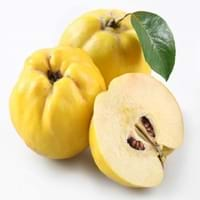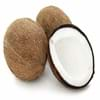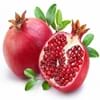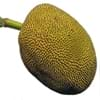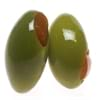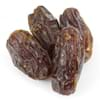Health Benefits
Cancer prevention, Diarrhea treatment, Muscle pain relief, Piles treatment, Prevents constipation, Skin cleansing, Ulcer treatment
Cancer prevention, Cures gastro-intestinal troubles, Reduces nervous tension, Ulcer prevention
General Benefits
Controls blood pressure, Digestive aid, Maintains healthy cholesterol level, Strengthens bones
Anti oxidant properties, Anti-inflammatory properties, Boosts immune system, Controls blood pressure, Digestive aid, Eye care, Helps in weight loss, Improves blood circulation, Maintains healthy cholesterol level
Skin Benefits
Anti-aging benefits, Hydrates skin, Skin rejuvenation
Anti-aging benefits, Reduces wrinkles
Hair Benefits
Prevents hair loss, Shiny hair, Softening mask
Regulates hair growth
Allergy Symptoms
Abdominal pains, Decrease in blood pressure, Dizziness, Hives, Itching of mouth, Lightheadedness, Swelling, Swelling of mouth, tongue or lips, Weak or racing pulse, Wheezing
NA
Side Effects
Headache, Intense headache, Tooth decay
Allergic reaction
Best Time to Eat
As a snack in the late afternoon, Don't consume at night and before bed, Eat the fresh ones, avoid mixing with any other foods, don't eat after meal.
As a snack in the late afternoon, Don't consume at night and before bed, Eat the fresh ones, avoid mixing with any other foods, don't eat after meal., Morning time (before lunch)
Vitamin B5 (Pantothenic Acid)
Vitamin C (Ascorbic Acid)
Vitamin E (Tocopherole)
Not Available
Vitamin K (Phyllochinone)
Not Available
Lutein+Zeaxanthin
Not Available
Phytosterol
Not Available
Calories in Fresh Fruit with Peel
Calories in Fresh Fruit without Peel
Not Available
Calories in Frozen Form
Not Available
Calories in Canned Form
Not Available
Type
Berry, Tropical
Tree fruit
Season
All seasons
Winter
Varieties
Cavendish Bananas, Lady Finger Bananas, Pisang Raja, Williams Bananas and Cooking Bananas
Meech’s Prolific, Lusitanica, Champion and Vranja AGM
Color
Green, Yellow
Green, Yellow
Shape
Curving Cylinder
Round
Origin
Papua New Guinea
Iran, South-West Asia, Turkey
Soil Type
Well-drained
Loam, Well-drained
Climatic Conditions
Warm
Warm
Facts about
- As bananas contain potassium-40 which is radioactive isotope of potassium, bananas are radioactive.
- Bananas float in water.
- There are around 1000 varieties of bananas.
- Eating this fruit will cheer you up.
- Due to its strong & fruity aroma, brides consumed quince to ensure "perfumed lips".
- It is also called as ‘Pear of Cydonia’, being native to Caucasus and Iran.
- They call it as the ‘golden apple’ of Greek Mythology.
Top Producer
India
Turkey
Other Countries
Brazil, Cameroon, China, Colombia, Ecuador, Ghana, Indonesia, Philippines, Uganda
Algeria, Argentina, Azerbaijan, China, Iran, Morocco, Serbia, Spain, Uzbekistan
Top Importer
Europe
United States of America
Top Exporter
Ecuador
Argentina
Botanical Name
Musa acuminata and Musa balbisiana
Cydonia oblonga
Synonym
Musa × dacca , Musa × sapidisiaca , Musa × sapientum
C. vulgaris
Subkingdom
Tracheobionta
Tracheobionta
Division
Magnoliophyta
Magnoliophyta
Class
Liliopsida
Magnoliopsida
Subclass
Liliidae
Rosidae
Order
Zingiberales
Rosales
Species
M. acuminata , M. balbisiana
C. oblonga
Generic Group
Banana
Rose
Difference Between Banana and Quince
We might think that Banana and Quince are similar with respect to nutritional value and health benefits. But the nutrient content of both fruits is different. Banana and Quince Facts such as their taste, shape, color, and size are also distinct. The difference between Banana and Quince is explained here.
The amount of calories in 100 gm of fresh Banana and Quince with peel is 95.29 kcal and 57.00 kcal and the amount of calories without peel is 89.00 kcal and Not Available respectively. Thus, Banana and Quince belong to and category.These fruits might or might not differ with respect to their scientific classification. The order of Banana and Quince is Zingiberales and Rosales respectively. Banana belongs to Musaceae family and Quince belongs to Rosaceae family. Banana belongs to Musa genus of M. acuminata , M. balbisiana species and Quince belongs to Cydonia genus of C. oblonga species. Beings plants, both fruits belong to Plantae Kingdom.

